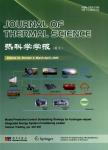版权所有:内蒙古大学图书馆 技术提供:维普资讯• 智图
内蒙古自治区呼和浩特市赛罕区大学西街235号 邮编: 010021

作者机构:Beijing Key Laboratory of Passive Safety Technology for Nuclear Energy North China Electric Power University Key Laboratory of Thermal Science and Power Engineering of Ministry of Education School of Aerospace Engineering Tsinghua University Central Southern China Electric Power Design Institute CO.LTD Shanxi Zhaozhuang Xinguang Power Generation CO.LTD School of Energy and Power Engineering Huazhong University of Science and Technology
出 版 物:《Journal of Thermal Science》 (热科学学报(英文版))
年 卷 期:2019年第28卷第2期
页 面:262-270页
核心收录:
学科分类:080802[工学-电力系统及其自动化] 0808[工学-电气工程] 08[工学]
基 金:financially supported by the National Natural Science Foundation of China (Grant No: 51506061 and 51706068) Fundamental Research Funds for the Central Universities (Grant No: 2017MS039)
主 题:steam surface condenser porous media cooling water flow path condensation computational fluid dynamics
摘 要:The effect of the cooling water flow path on the flow and heat transfer in a double tube-pass condenser for a 660 MW power plant unit was numerically investigated based on a porous medium model. The results were used to analyze the streamline, velocity, air mass fraction and heat transfer coefficient distributions. The simulations indicate that the cooling water flow path is important in large condensers. For the original tube arrangement, the heat transfer with the lower-upper cooling water flow path is better than that with the upper-lower cooling water flow path. The reason is that the steam cannot flow into the internal of upper tube bundle and the air fractions are higher in the upper tube bundle with the upper-lower cooling water flow path. An improvement tube arrangement was developed for the upper-lower cooling water flow path which reduced the back pressure by 0.47 kPa compared to the original scheme. Thus, the results show that the tube arrangements should differ for different cooling water flow paths and the condenser heat transfer can be improved for the upper-lower cooling water flow path by modifying the tube arrangement.